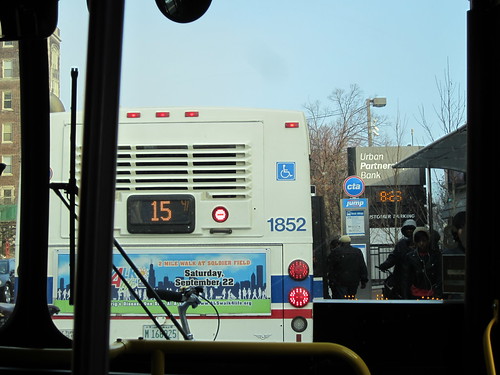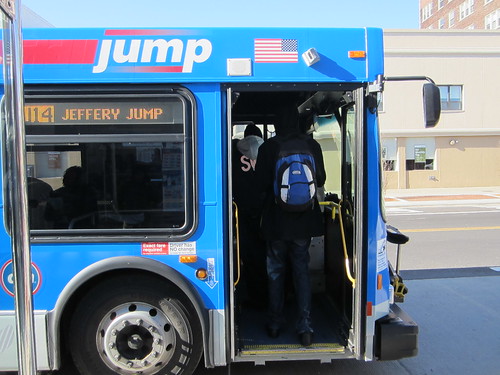After Streetsblog Chicago readers voiced concerns that eliminating local bus stops on bus rapid transit streets would hurt senior citizens and people with disabilities, I contacted CTA spokeswoman Lambrini Lukidis, who confirmed that at least part, if not all, of current service would be preserved. "CTA would retain some local service, which provides immediate access for CTA customers, while adding the new BRT service," she wrote.
The CTA and the Chicago Department of Transportation are currently considering Ashland and Western avenues as BRT routes. In general there are currently bus stops every 1/8 mile on these streets; the BRT proposal calls for express buses that stop every 1/2 mile. The express stops would require riders to walk at most two extra blocks, 1/4 mile, out of their way, which shouldn't be a hardship for the vast majority of riders, and the extra 2.5 - 5 minute walk would be worth it for the time savings on trips of any significant length. But it does make some sense to maintain local stops for seniors, folks with disabilities and others who might choose a shorter walk or wheelchair trip to the bus stop over faster bus service.
However, if local service is maintained, will the local buses slow down the express buses? That seemed to be a minor issue when I rode the J14 Jeffery Jump, a BRT-like express bus service the CTA launched last year on the South Side, featuring dedicated lanes for inbound buses during the morning rush hour and outbound buses during the p.m. rush. Although the bus lanes were almost entirely clear of parked and moving autos, once or twice a #15 Jeffery Local picking up passengers obstructed the Jump’s path. When this happened, our driver tapped his horn lightly to alert the other operator and briefly switched to the car lane to leapfrog the stopped bus.
Lukidis didn’t provide details about how the two types of buses would coexist on full-blown BRT corridors. “The next phase of the BRT project will include exploring how local bus service would operate on a route that would also have BRT service, to ensure both operate harmoniously.”
One possible solution springs to mind. The city is currently considering four potential BRT street configurations; center-running BRT with travel lane removals would be the most efficient, as well as ped-friendly, choice. In this scenario it might work to have local buses share the single travel lane with other motor vehicles and pick up passengers curbside. Cars wouldn’t be delayed by the local buses any more than they currently are on two-lane streets. Meanwhile, the center-running BRT vehicles could travel quickly in dedicated lanes and their drivers wouldn’t have to worry about leapfrogging the locals.






